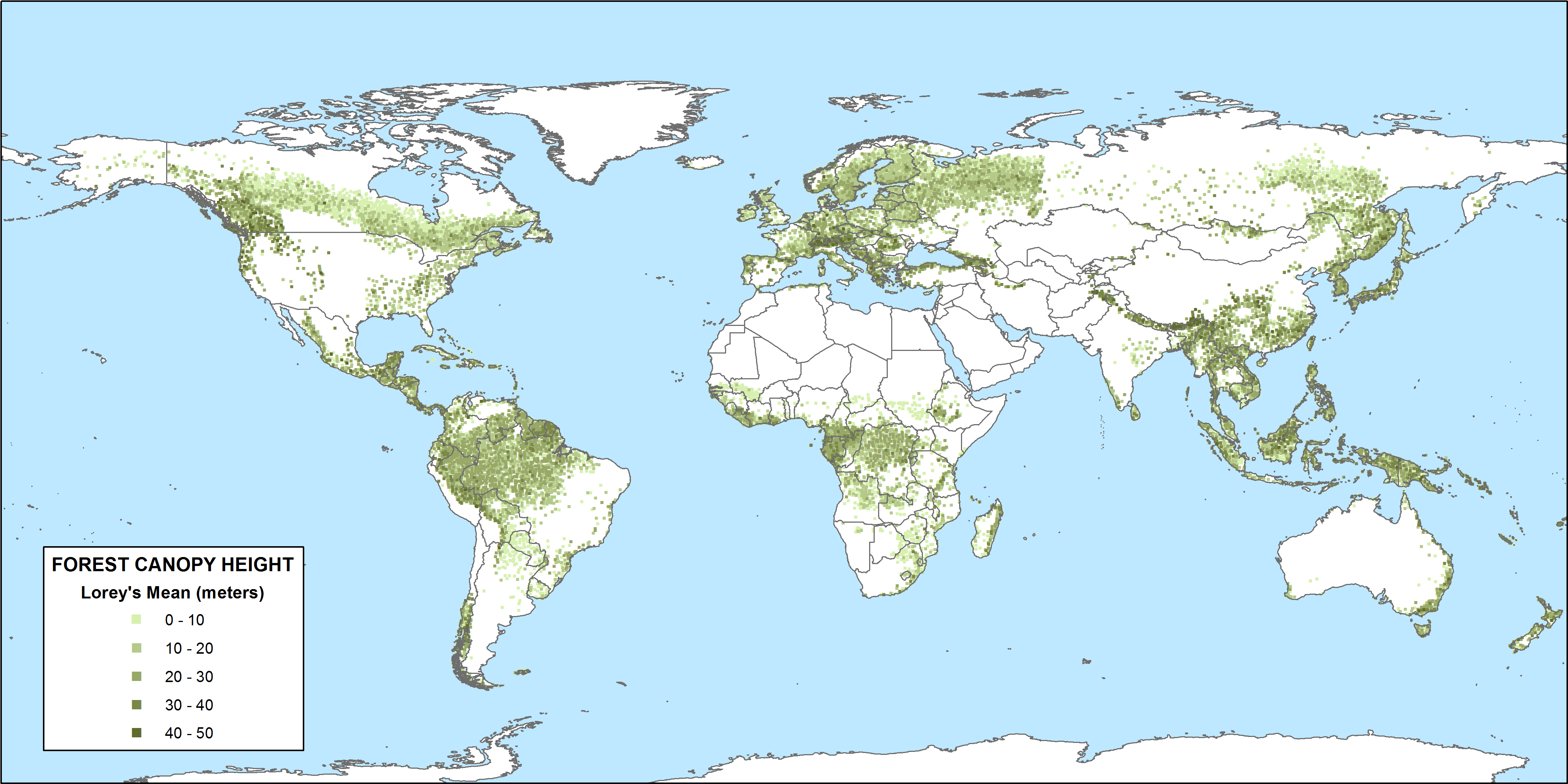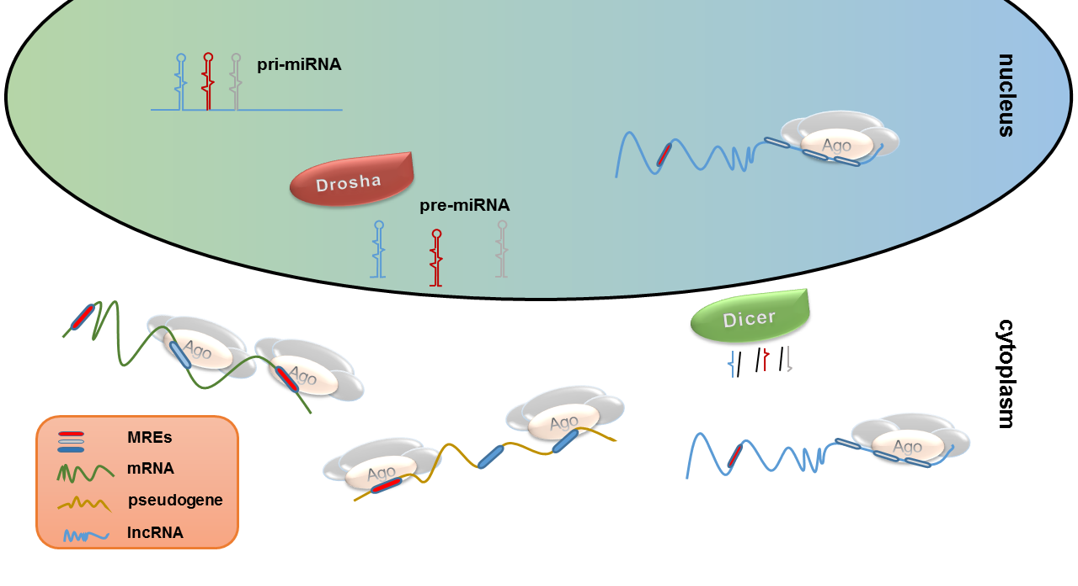Tropical forest canopy height is a vital metric that provides insight into the health of these essential ecosystems, often dubbed the “lungs of the Earth” for their significant role in carbon storage. Recent advancements in technology, particularly NASA’s GEDI LiDAR, have revolutionized our understanding of how climate change impacts these towering canopies. Through detailed measurements of canopy height, scientists can gauge both forest health indicators and overall ecosystem productivity. The study reveals that these elevations are influenced by factors such as heat and drought, which pose growing threats to the carbon storage capacities of tropical forests. By analyzing these changes, researchers hope to develop strategies for conserving these critical habitats amid the pressures of a changing climate.
The height of the uppermost layer of trees in tropical forests is a critical indicator used to assess the vitality and resilience of these ecosystems in the face of environmental changes. As satellites equipped with sophisticated LiDAR technology examine the vertical structure of these wooded regions, they uncover essential data about forest health and its ability to store carbon. Such studies expand our understanding of how variations in climate affect the growth potential and biodiversity of forest habitats. With ongoing scrutiny of the interplay between climatic conditions and forest characteristics, conservationists are better equipped to protect these invaluable resources as they navigate the complex challenges brought about by climate change.
The Role of Tropical Forest Canopy Height in Ecosystem Health
Tropical forest canopy height is not merely a measure of vertical space but a vital indicator of overall ecosystem health and productivity. Studies have shown that the taller the canopy, the greater the forest’s ability to store carbon, demonstrating a strong correlation between canopy height and carbon storage capabilities. This relationship emphasizes the need for robust monitoring of canopy heights using advanced technologies such as NASA’s GEDI LiDAR, which can provide detailed insights into forest structure and health. As climate change poses significant threats to these delicate ecosystems, understanding these metrics becomes crucial for maintaining their roles in carbon sequestration.
Moreover, canopy height serves as a useful indicator for forest biodiversity. A taller canopy typically supports a broader array of flora and fauna and maintains the microclimates that many species rely on. The connection between canopy height and biodiversity is particularly evident in regions with less anthropogenic disturbance, such as untouched tropical forests. By utilizing sophisticated LIDAR measurements, researchers can track changes in canopy height, which may reveal shifts in biodiversity and overall forest resilience against climate impacts.
Impacts of Climate Change on Tropical Forests
Climate change is significantly altering the dynamics of tropical forests, impacting their structure, health, and overall functionality. Increasing temperatures and prolonged droughts can cause stress to lower canopies, which are essential for the health of the entire ecosystem. Research indicates that southern Amazonian forests are particularly susceptible to these changes, experiencing decreased canopy height due to extended dry seasons. These shifts can lead to diminished carbon storage potential, thus exacerbating climate change effects as these forests hold a significant portion of global carbon pools.
Additionally, the irregularities that climate change induces in forest environments often lead to varied impacts across different regions. For instance, in the moist central Amazon, elevation plays a greater role in canopy height compared to regions that are primarily influenced by dry seasons. By understanding how climatic factors intertwine with local topography and soil conditions, scientists can better predict and mitigate the impacts of climate change on these vital ecosystems.
Using NASA’s GEDI LiDAR to Assess Forest Health
NASA’s Global Ecosystem Dynamics Investigation (GEDI) LiDAR technology represents a groundbreaking approach in remote sensing, allowing scientists to assess and monitor tropical forest health with unprecedented precision. By measuring the vertical structure of forest canopies, GEDI provides critical data on canopy height, leaf density, and biomass—all key indicators of forest health and productivity. This technology is particularly valuable in regions where traditional assessment methods are challenging, enabling comprehensive analysis over vast forest areas.
The application of GEDI LiDAR enhances our understanding of the environmental variables that influence canopy height and forest health. For example, researchers have noted that climatic factors account for approximately 75% of the variations in canopy structure. As conditions across the globe evolve due to climate change, tools like GEDI will be essential for identifying which regions are at risk, informing conservation efforts and policy decisions aimed at protecting the world’s forests and bolstering their carbon storage capabilities.
The Importance of Forest Health Indicators
Forest health indicators, such as canopy height, offer vital statistics that reflect both the current condition of the ecosystem and its potential to respond to environmental changes. These indicators are necessary not only for identifying areas in need of protection but also for understanding how well these forests can recover from stressors like climate change. Monitoring canopy height through advanced technologies reveals trends and anomalies that can preemptively highlight issues affecting carbon storage and ecosystem productivity.
Regular assessment of forest health indicators enables scientists and policymakers to gauge the effectiveness of conservation measures and the resilience of different forest types against climate change impacts. By closely monitoring these metrics, stakeholders can make informed decisions that promote sustainable land use and protect vital carbon storage areas, thus playing a significant role in combating global warming.
Ecosystem Productivity and Tropical Forests
Ecosystem productivity within tropical forests is heavily influenced by the canopy structure, which facilitates resource capture, including sunlight and rainfall essential for photosynthesis. Taller canopies generally indicate healthier and more productive ecosystems, allowing for greater biomass accumulation. The relationship between these factors underscores the need for continuous monitoring to assess how disturbances, both natural and anthropogenic, affect forest productivity levels and, consequently, their carbon storage capabilities.
Furthermore, analyzing productivity dynamics within tropical forests provides insights into the broader implications for climate change adaptation strategies. As climate patterns evolve and rainfall distribution shifts, understanding how these changes impact ecosystem productivity becomes critical. Enhanced productivity not only bolsters carbon sequestration efforts but also supports the diverse range of species that depend on these forests, thus maintaining ecological balance and resilience.
Climate Change Mitigation and Tropical Forests
As the implications of climate change become increasingly dire, tropical forests play a crucial role in global mitigation strategies. Their potential for carbon storage is unmatched, and efforts to protect and restore these forests are essential for meeting international climate goals. By understanding how climate change affects tropical forest canopy height and overall health, we can implement effective conservation practices that prioritize these ecosystems as critical components in our response to climate challenges.
Conserving tropical forests not only aids in carbon sequestration but also preserves biodiversity and maintains ecosystem services, which are vital for human well-being. Therefore, recognizing the link between forest health indicators, climate change impacts, and mitigation strategies is imperative. As research continues to unveil the complexities of these relationships, concerted efforts must focus on safeguarding these invaluable areas for future generations.
Monitoring Tropical Forests and Technology Integration
The integration of advanced technologies in monitoring tropical forests is transforming how we understand and respond to environmental changes. Tools like NASA’s GEDI LiDAR enable researchers to conduct extensive analyses of forest health, canopy height, and changes over time. This technological advancement allows for better data collection and interpretation, facilitating proactive measures to combat the adverse effects of climate change.
With the ability to monitor large areas efficiently, scientists can track the effects of climate-related stressors, ensuring that conservation efforts are data-driven and responsive to current conditions. This technological revolution in environmental monitoring not only enhances our understanding of tropic forests but also emphasizes the importance of interdisciplinary approaches in tackling global environmental challenges.
The Future of Tropical Forest Conservation
Looking forward, the future of tropical forest conservation hinges on collaboration between scientists, policymakers, and local communities. Leveraging advanced tools like GEDI can foster better understanding and engagement in preserving these vital ecosystems. Policymakers must prioritize the protection of tropical forests, recognizing their integral role in carbon storage and climate change mitigation.
Collaborative efforts that incorporate local knowledge and scientific expertise can lead to innovative strategies for conserving these forests. Future conservation initiatives should not only focus on maintaining biodiversity but also on enhancing carbon storage capacities, ensuring that tropical forests continue to provide essential services in the face of a changing climate.
The Global Importance of Tropical Forests
Tropical forests are incredibly significant in a global context, not only for their biodiversity but also for their role in regulating the Earth’s climate. They act as major carbon sinks, and their health directly affects global carbon cycles. By preserving tropical forests, we contribute to stabilizing the climate, thus asserting their importance in international climate agreements and global environmental policies.
Furthermore, tropical forests are home to millions of indigenous people who rely on these ecosystems for their livelihoods and cultural identity. Therefore, global initiatives should encompass social considerations alongside environmental ones, ensuring that conservation efforts benefit both the planet and its inhabitants. A multi-faceted approach will enhance our capacity to protect these forests, underscoring their critical importance on the world stage.
Frequently Asked Questions
How does tropical forest canopy height relate to climate change impact?
Tropical forest canopy height serves as a critical indicator of forest health and productivity, influenced extensively by climate change. As climate variables such as increased temperatures and prolonged dry seasons alter the growth conditions, the height of the canopy may be compromised, affecting carbon storage capabilities.
What role does NASA GEDI LiDAR play in measuring tropical forest canopy height?
NASA’s GEDI LiDAR technology is instrumental in accurately measuring tropical forest canopy height from space. By providing detailed vertical structure data, it allows scientists to assess how climate change impacts the canopy and overall forest health across vast regions.
Why is canopy height considered a forest health indicator?
Canopy height is an essential forest health indicator because taller canopies typically correlate with higher carbon storage, greater biomass, and enhanced ecosystem productivity. Monitoring changes in canopy height can reveal the impacts of stressors such as climate change.
What is the relationship between tropical forest canopy height and carbon storage?
The relationship between tropical forest canopy height and carbon storage is significant; taller canopies are linked to greater above-ground biomass and carbon sequestration. As climate change threatens canopy heights, the carbon storage potential of these forests may decline.
How does canopy height affect ecosystem productivity in tropical forests?
Canopy height directly influences ecosystem productivity in tropical forests by affecting light penetration and microclimates. Taller canopies can maximize sunlight for lower vegetation, enhancing photosynthesis and overall forest vitality, especially under changing climate conditions.
What environmental factors influence tropical forest canopy height?
Key environmental factors influencing tropical forest canopy height include climate variables like temperature and precipitation, topographical aspects like elevation, and soil properties. These factors are critical for understanding variations and predicting responses of forests to climate change.
How does climate change affect tropical forest canopy height in the southern Amazon?
In the southern Amazon, climate change results in prolonged dry seasons which significantly impact tropical forest canopy height. These extended dry periods threaten the health of the forests, leading to potential reductions in canopy height and overall forest resilience.
What are the implications of observing changes in tropical forest canopy height for conservation efforts?
Monitoring changes in tropical forest canopy height is essential for conservation as it helps identify regions vulnerable to climate change. This information can guide policy decisions aimed at protecting vital carbon storage areas and biodiversity hotspots in the face of climate challenges.
| Key Points | Details |
|---|---|
| Tropical Forests as Earth’s Lungs | Forests store carbon and are affected by climate change. |
| NASA’s Role | The research employs NASA’s GEDI technology for analysis. |
| Importance of Canopy Height | Canopy height is a key indicator of forest health and biodiversity. |
| Key Findings | Climate, soil, and topography heavily influence canopy height. |
| Vulnerability of Tropical Forests | The southern Amazon is particularly susceptible to changing climates. |
| Need for Policy Action | Protecting these forests is essential for carbon sequestration efforts. |
Summary
Tropical forest canopy height is a critical measure of forest health and ecosystem productivity. Recent research utilizing advanced NASA technology highlights the necessity of understanding canopy dynamics in the face of climate change. This can help inform effective conservation strategies to protect these vital ecosystems.




